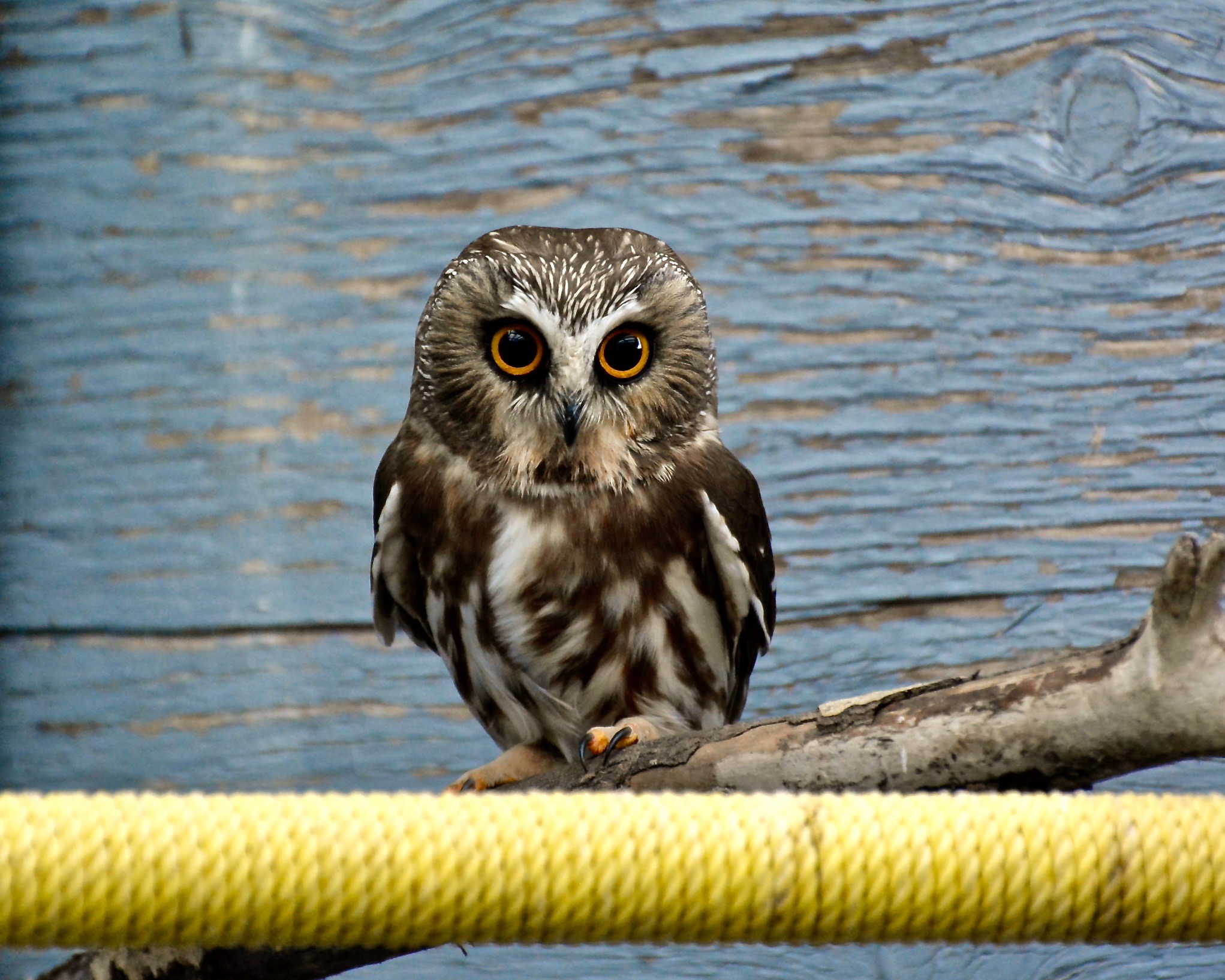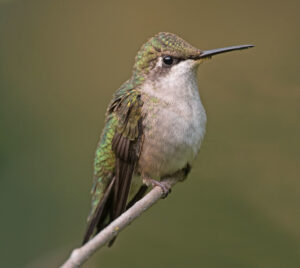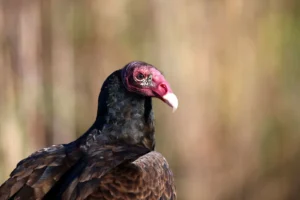By Robyn Maerz
Do you like to stroll through a forest on a warm sunny day? How enjoyable is it to walk among the trees, taking in all the sights and sounds of the woods! But did you know that there is a tiny owl you have most likely walked right past, sight unseen? Even dedicated birders can be stumped trying to spot it, though it often hides in plain sight.
Whoooooo is it? The northern saw-whet owl!
Searching for saw-whets
This pint-sized predator lives in the northern forests and western mountains of the United States, Mexico and Canada. They appear to prefer mature forests that have an open understory for foraging, along with deciduous trees for nesting and dense conifers for roosting – preferaby with riverside habitat nearby. Their name comes from an alarm call; a “skiew” sound that reminded early settlers of the sound of a whetstone, sharpening a saw.
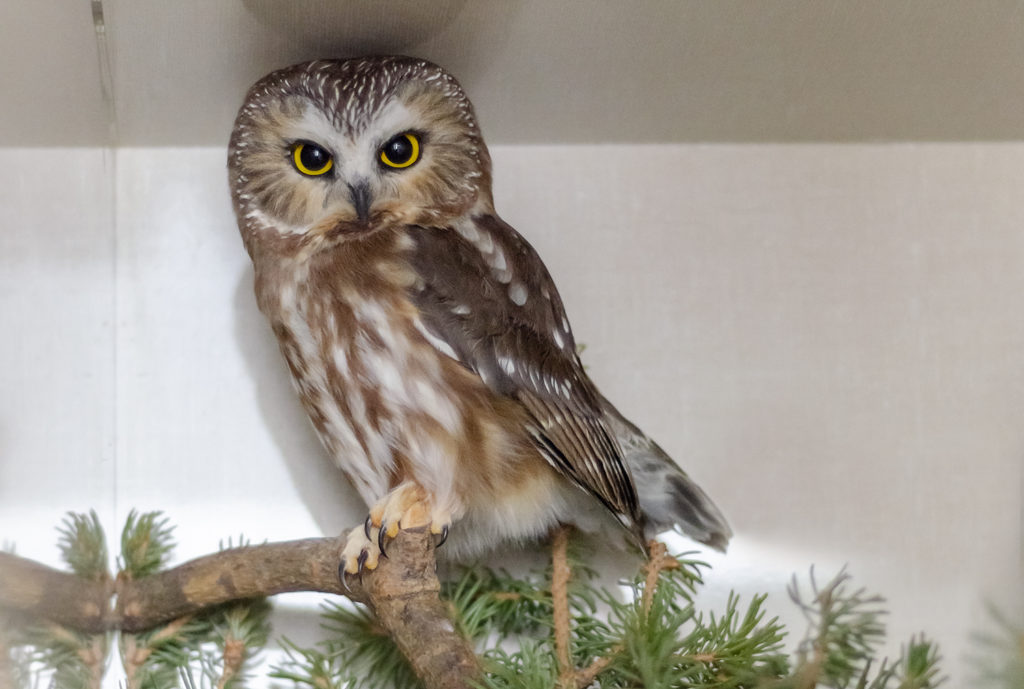
Petite, yet predatory
Only around the size of an adult human’s fist, saw-whet owls possess excellent hearing and low light vision. They are strictly nocturnal, and at night these miniature owls become winged terrors, swooping down on their prey from a low perch along the forest edge. Deer mice, shrews and voles are all on the menu, but saw-whet owls will supplement their diet with beetles, grasshoppers, moths and bugs. Daylight hours are for sleeping, and these owls keep well hidden from view, perched motionless in thick vegetation. They are usually found close to the trunk of a conifer tree, about 3 metres off the ground. Their plumage provides excellent camouflage, and if threatened, they “freeze” in order to appear like a branch or bump. No wonder saw-whet owls are so rarely seen!
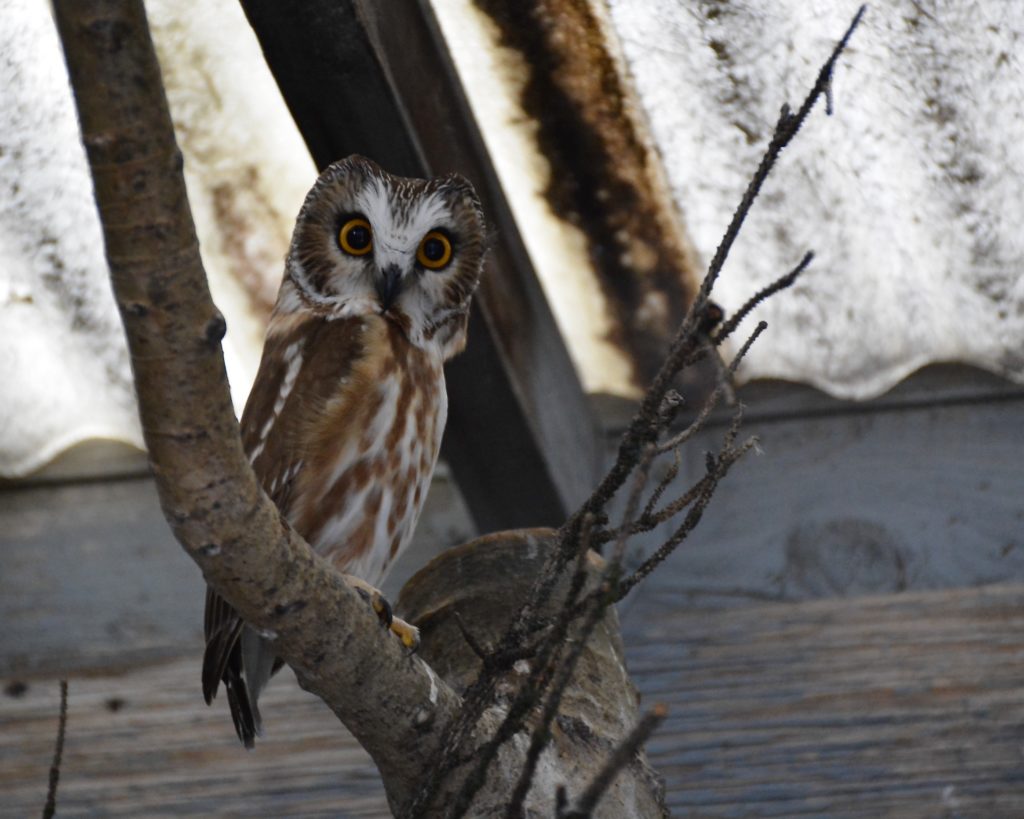
Romance and reproduction
Solitary and silent for most of year, the birds become much more vocal in late winter or early spring. Male birds start making a rhythmic tooting sound that may be repeated for hours with barely a break. An interested female will approach the male, calling out with a high pitched “tsst” sound. The male flies up from his perch, circles her in flight about 20 times, and then lands beside her to presents a prey item. He needs to show off his hunting prowess!
It is thought that the female chooses the nest site, which is usually located in an abandoned pileated woodpecker or northern flicker hole in a dead snag. Her partner may assist in the search, helpfully perching by a suitable site while giving his “too-too-too” call. The female lays 4-5 eggs, and does all the incubation and brooding, leaving the nest only a few times per night to defecate and cough up a pellet. Her partner hunts and brings food to the nest, both for his mate and the chicks.
Leaving the nest
When the chicks are about 18 days old, the female leaves the nest and roosts elsewhere, occasionally bringing food to the young birds, but, she may leave the area altogether, and even mate again with another male, if prey is abundant. Until the chicks leave the nest at around 4 to 5 weeks old, it is mostly the male who takes over feeding the young. The plumage colours of a juvenile owl and an adult are so different that you might think you are looking at two different species!
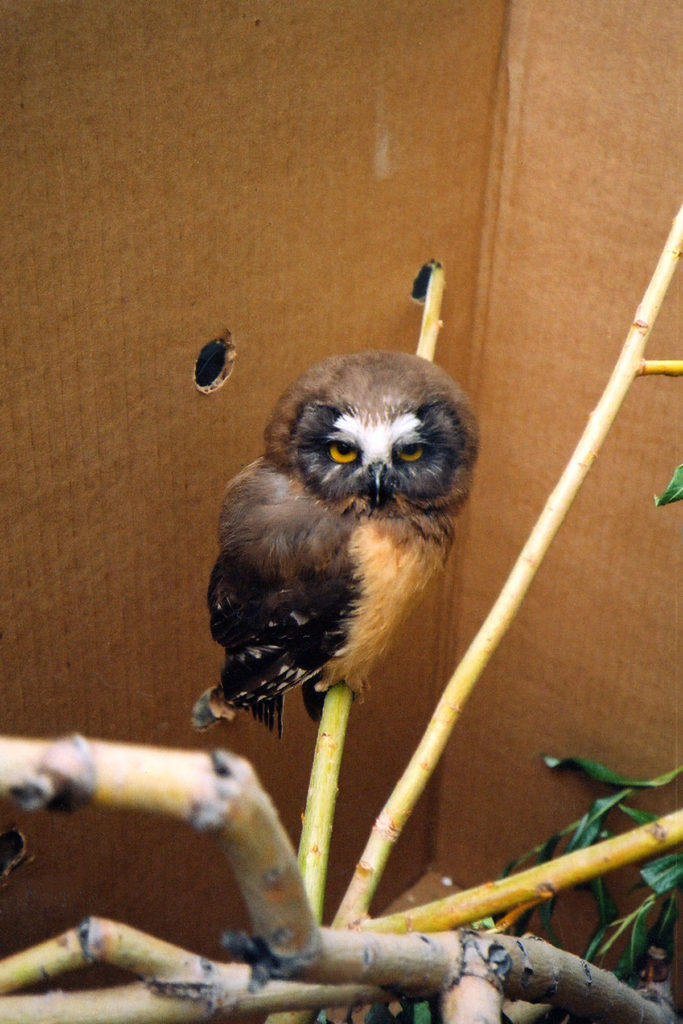
The young birds are fed for another four weeks, and then they are on their own. At around one year of age, a young saw-whet owl undergoes its first molt and becomes sexually mature, and are ready to find a mate when spring arrives the following year.
Helping our saw-whets
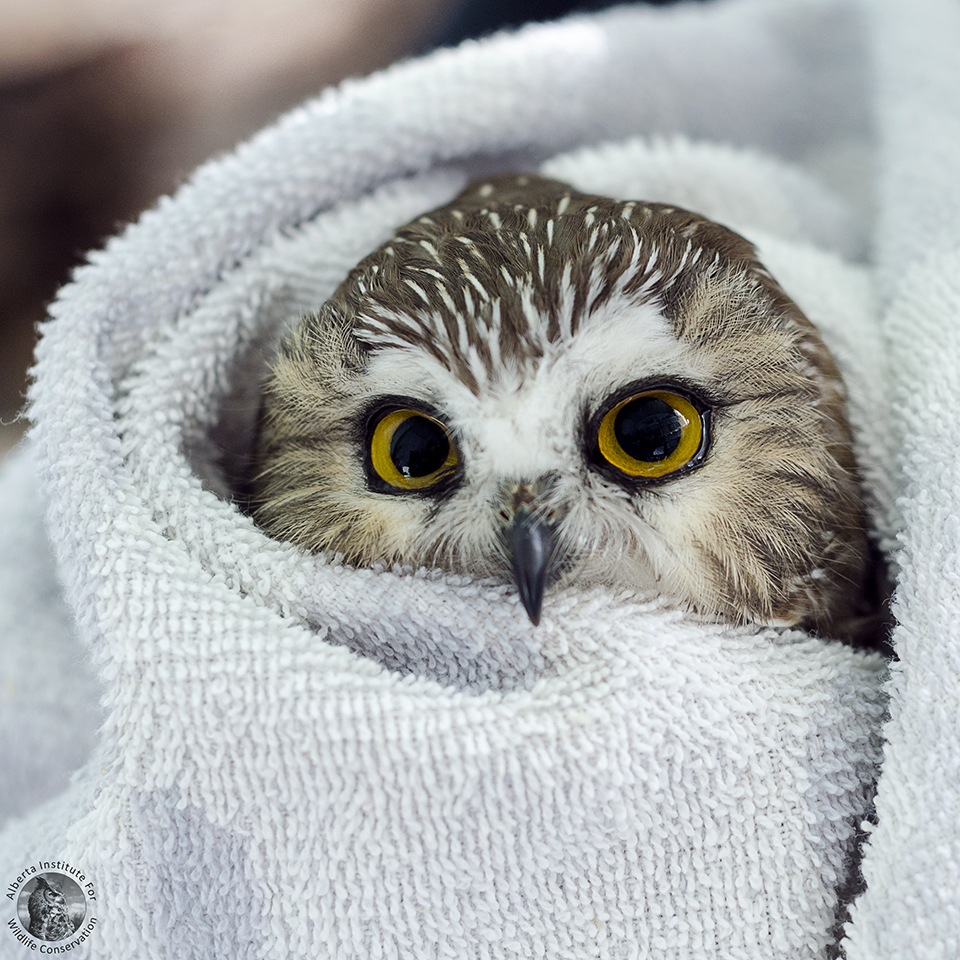
Despite being common and widespread, the secretive habits of northern saw-whet owls make them a difficult study subject. Standardized surveys such as the North American Breeding Bird Surveys and the annual Christmas Bird Count have not been able to identify any population trends, but it is thought that their overall population has probably declined in past decades due to habitat loss. As saw-whet owls will readily use nest boxes, people living near a heavily wooded area could consider setting one up against the trunk of a larger tree, and not use poisons to control rodent populations as this may sicken an unfortunate owl who has eaten a poisoned mouse. As well, leaving dead trees standing means the birds will have more choices for nesting.
You will be lucky to spot a northern saw-whet owl in the wild even though they are year round residents in the forests of Alberta. They are hardy little predators, but much remains for us to discover about their wild lives.
References
Alberta Biodiversity Monitoring Institute https://abmi.ca/home/data-analytics/biobrowser-home/species-profile?tsn=99003078 Accessed 11 August 2021
Audubon.org https://www.audubon.org/field-guide/bird/northern-saw-whet-owl Accessed 03 August 2021
The Cornell Lab: All About Birds https://www.allaboutbirds.org/guide/Northern_Saw-whet_Owl/overview Accessed 03 August 2021
ebird.org https://ebird.org/species/nswowl Accessed 01 August 2021
Edmonton Area and Land Trust https://www.ealt.ca/species-spotlight-list/northern-saw-whet-owl Accessed 01 August 2021
The Owl Pages https://www.owlpages.com/owls/species.php?s=3030 Accessed 03 August 2021
Washington Nature Mapping Program http://naturemappingfoundation.org/natmap/facts/northern_saw-whet_owl_712.html Accessed 01 August 2021

